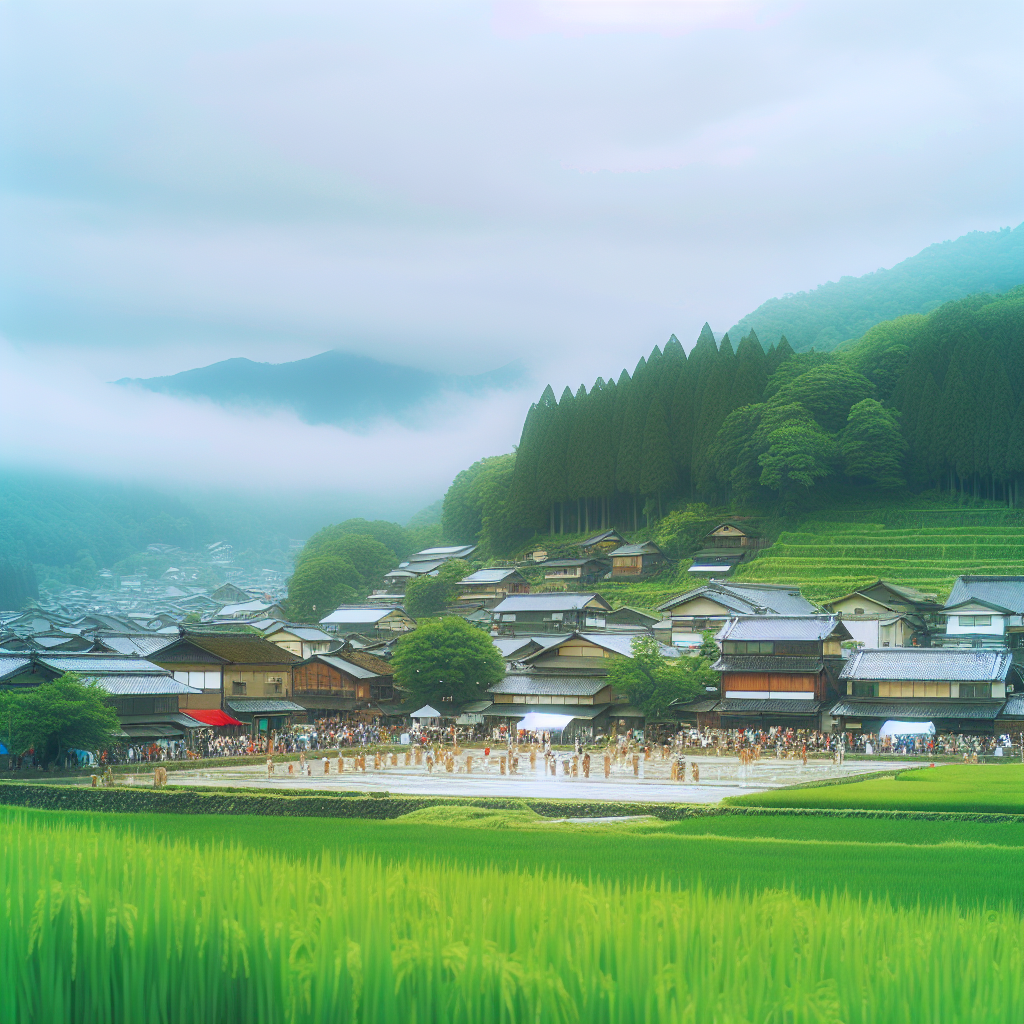Step off the beaten path to discover Nakadate, a quintessential example of Japan’s hidden rural gems. This article delves into the rich tapestry of Nakadate’s traditional culture, community-centered tourism, and agrarian traditions, exploring how such places offer an authentic Japanese experience.
Rural Japanese Culture and Lifestyle
In Nakadate, community-centered tourism thrives, creating a symbiotic relationship between residents and visitors. This approach invites travelers to engage with the everyday activities of the villagers, from rice planting to traditional crafts, fostering authentic connections. Visitors learn local wisdom, weaving stories into their journeys that highlight Nakadate’s rich heritage. As this tourism model flourishes, it also boosts the village’s sustainability, anchoring its economy while preserving intergenerational rituals and traditions, thus ensuring that Nakadate’s unique culture remains vibrant for future generations.
Community-Centered Tourism in Nakadate
Community-centered tourism in Nakadate exemplifies a harmonious relationship between visitors and residents, fostering an environment where both can flourish. By engaging travelers in local traditions and agrarian practices, Nakadate offers a genuine glimpse into rural life, allowing visitors to contribute to the village’s sustainability. This approach encourages intergenerational knowledge transfer, ensuring that the wisdom of local elders enriches the experiences of those seeking to connect deeply with Japan’s cultural narratives. Through workshops, shared meals, and heritage walks, visitors gain insight into the essence of Nakadate, leading to a mutual appreciation and respect that nurtures the village’s future.
Understanding Traditional Festivals in Nakadate
In Nakadate, traditional festivals breathe life into the community, offering travelers a unique glimpse into Japan’s vibrant cultural heritage. These celebrations, such as the famous rice planting festival, not only showcase ancient agrarian rituals but also emphasize intergenerational participation, where elders impart wisdom to younger villagers. Participants engage in time-honored practices, fostering connections to their roots. Such experiences enrich mindful travelers, allowing them to partake in living narratives, deepen their understanding of local customs, and promote sustainability through cultural preservation.
The Essence of Agrarian Traditions and Everyday Life
In Nakadate, agrarian traditions intertwine with everyday life, embodying the essence of Japanese cultural heritage. Rice cultivation, a cornerstone of local sustenance, showcases the intricate relationship between the land and its stewards. Seasonal practices—such as planting in spring, tending in summer, and harvesting in autumn—are not merely agricultural tasks. They encapsulate a rhythm of life guided by nature’s cycles. The community gathers to share wisdom and stories around these activities, reinforcing intergenerational bonds and nurturing a collective identity rooted in the agrarian past. These practices create a tapestry of resilience, where food and folklore seamlessly merge, enriching the authentic Japanese experience.
A Reflection on Hidden Japan Travel: Intergenerational Wisdom
In Nakadate, travel transcends mere exploration; it becomes a profound journey into the heart of intergenerational wisdom. Older residents, custodians of their village’s heritage, share tales of resilience and adaptability, revealing how age-old practices inform contemporary life. Through cultural rituals, traditional festivals, and shared meals, visitors engage in a reciprocal exchange that fosters understanding and appreciation. This mindful travel not only illuminates the unique narratives of rural Japan but also inspires a deeper inner reflection, essential for revitalizing vanishing towns and strengthening community ties.
Takeaways from This Article
Visiting places like Nakadate illuminates a Japan that goes beyond the familiar high-tech facade. By embracing rural life, festivals, and traditions, travelers can explore timeless narratives and capture the enduring spirit of rural Japan.

Leave a Reply